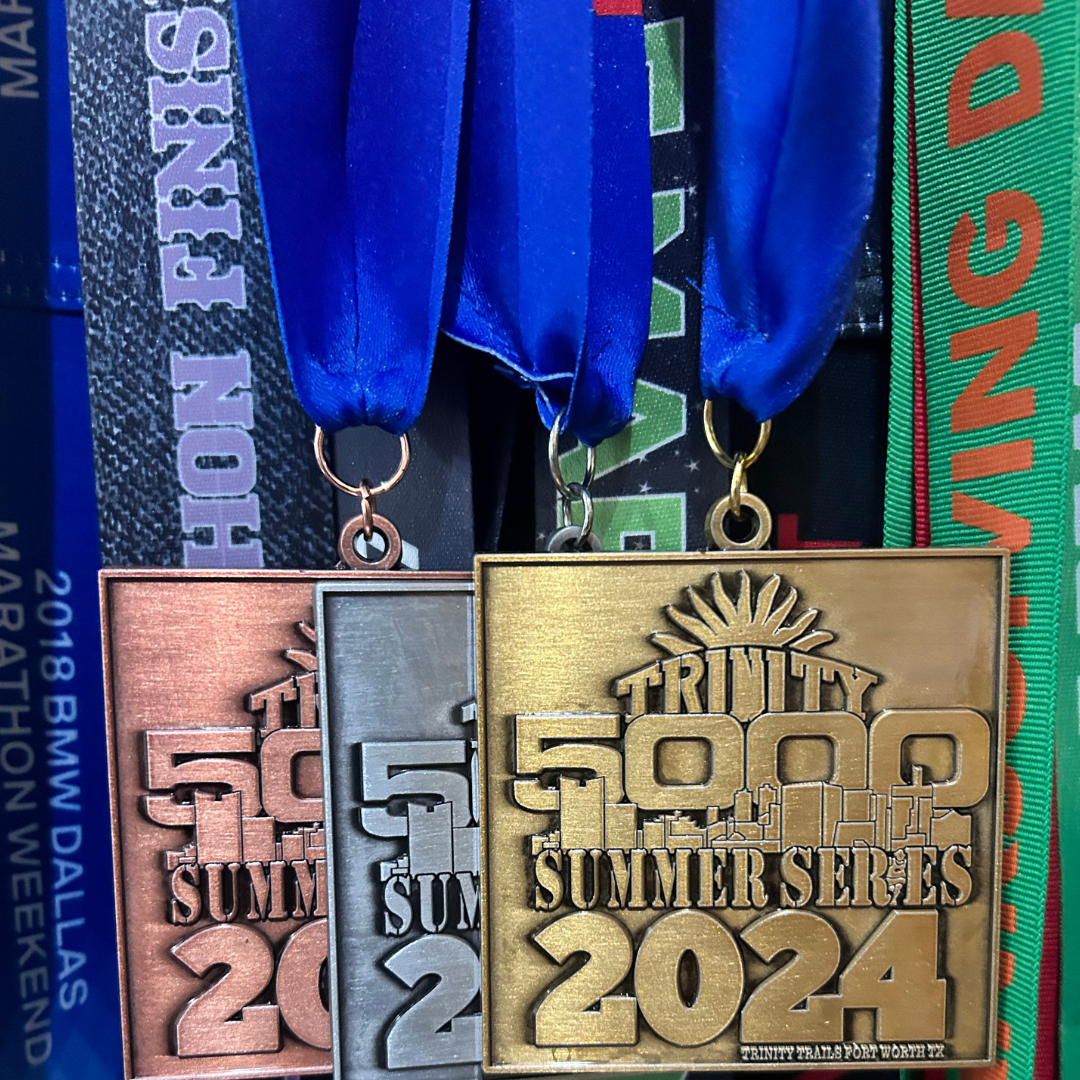Welcome to the latest edition of Running A-Z, a weekly blog post where I cover a running-related topic following the order of the alphabet. We are on letter H, you can catch up on letters A through G in the archives.
H is for Heart Rate
You bought a shiny new heart rate monitor, a new GPS watch with a HR monitor or a FitBit. You love being able to look at your wrist and seeing your heart rate at any given moment, but what does it mean? Just knowing your heart rate isn't enough, you need to know how to apply that knowledge to maximize your training.
What are heart rate training zones? What is my max heart rate? What is my resting heart rate? How does this impact my training? I'm going to explain it all!
HR ZONES
| HR STAGE | % OF HR |
|---|---|
| STAGE 1 | 65-75% |
| STAGE 2 | 76-85% |
| STAGE 3 | 86-95% |
We are going to establish your personalized training stages based on your max and resting heart rate using the HR reserve method. HRR is calculated using the Karvonen method formula:
((HRMAX - HR REST) X DESIRED INTENSITY) + HR REST
Having flashbacks of high school algebra? Don't worry, there are a ton of online calculators that will make this extremely easy. But before we start you need to know your resting heart rate and your max (or estimated) max heart rate.
Estimating Max Heart Rate:
There is a formula that is widely used to calculate max heart rate but you should be aware that is an estimate and will probably need to be adjusted once you start your heart rate training. You may find when you start training that your heart rate will go higher than your calculated max rate, there is no need to worry, your heart is probably not exploding. You just need to adjust your calculations with your actual max heart rate. Don't worry if it doesn't make sense yet. Just keep reading.
To start take 220-your age to get an estimated max heart rate.
I am 41, so using this formula (220-41) my max heart rate as 179.
Determining your resting heart rate
A normal resting heart rate for adults is between 60-90 beats per minute. You should take your resting heart rate in the morning before you get out of bed (before your coffee!). Do it for a few days in row to get an idea of your average and make note of the lowest reading. FitBit shows your resting heart rate on the app. Generally speaking, a lower resting heart rate implies a healthier more efficient heart.
According to my FitBit my resting heart rate is 55 BPM.
Putting it all together with the Karvonen method formula
So now we have the numbers, let use the Karvonen method formula (or an online calculator) to calculate our target heart rates.
((HRMAX - HR REST) X DESIRED INTENSITY) + HR REST
220-41 (AGE) = 179
179 - 55 (RESTING HEART RATE) = 124
124 X .65 (DESIRED INTENSITY - BASE TRAINING ZONE 65%) = 81
81 + 55 (RESTING HEART RATE) = 136
136 is the low end of my target heart rate for my base training zone. Here are my heart rate zones based on my age, resting HR, and estimated max heart rate.
| HR STAGE | HEART RATE |
|---|---|
| STAGE 1 | 136-148 |
| STAGE 2 | 149-160 |
| STAGE 3 | 161-173 |
How to apply HR stages to your training
Heart rate training
Once you start plugging the numbers it will all makes sense. Trust me, because I am terrible at math and if I can do it, so can you. Let's get to the fun part, the training!
STAGE ONE
Stage 1 is your base training zone. This stage should be used for apparently healthy people that are new to exercise, people with a significant amount of weight to lose and for everyone in recovery periods or easy training days. (Yes, you should have easy training days built into your schedule.)
In stage one you should be working at conversational pace, which means you could hold a conversation for the entire duration of the workout without stopping between words or sentences to catch your breath.
People that are new to exercise should gradually build up to 30-60 continuous minutes in this stage before advancing to stage 2. Note you may start at just five minutes if you are new to exercise. The key is to progress slowly and gradually according to your own fitness levels.
This stage is also sometimes referred to as the fat burning zone, but be careful not to fall for the myth of the fat burning zone. I wrote about it in detail in another post.
STAGE TWO
Stage two is the introduction of interval training. Interval training can be highly effective for fat loss, but be sure you have safely graduated out of stage one before moving to stage two to avoid injury, overtraining or burnout.
During a Stage Two workout you would begin by warming up in zone one for 5-10 minutes.
Increase your pace to bring your heart rate into zone 2 for one minute.
Return to zone one for 1-3 minutes or until your heart rate recovers. You will find as your heart gets more efficient over time, you will recover more quickly.
Repeat the intervals into zone two for one minute and back into recovery for 3-5 times as long your heart recovers within those 3 minutes. It is important that your heart recovers back to stage one before attempting another interval.
Cool down for 5-10 minutes in stage one.
This is what a Stage two training day might look like for someone just starting in stage training. This is based on my personal heart rate zones, you will need to calculate your own to get your personalized stages. Need help?
| HR STAGE | HEART RATE | MINUTES |
|---|---|---|
| STAGE 1 | 136-148 | 5-10 |
| STAGE 2 | 149-160 | 1 |
| STAGE 1 | 136-148 | 1-3 |
| STAGE 2 | 149-160 | 1 |
| STAGE 1 | 136-148 | 1-3 |
| STAGE 2 | 149-160 | 1 |
| STAGE 1 | 136-148 | 5-10 |
Alternate between stage one and stage two training days so that you never do interval training days back to back. Recovery it key to progress.
STAGE THREE
Stage three is for people with moderately high cardiorespiratory fitness level base. You should have been working in stage two for at least 3-6 weeks. Your heart rate recovery time in stage two should be about a minute between intervals before moving into stage three work.
Warm up in zone one for 5-10 minutes
Increase the workload (pace or incline) every minute until reaching HR stage three. This should take about two minutes.
Once you reach stage three, stay there for one minute.
Reduce the effort to return to stage two. Once heart rate recovers at this stage (1-3 minutes) push back up into stage 3 for one minute.
Cycle between stage two and stage three before cooling down for 5-10 minutes in stage one. This is what a training day might look like for someone starting out in stage three training.
| HR STAGE | HEART RATE | MINUTES |
|---|---|---|
| STAGE 1 | 136-148 | 5-10 |
| STAGE 2 | 149-160 | 2 |
| STAGE 3 | 161-173 | 1 |
| STAGE 2 | 149-160 | 1-3 |
| STAGE 3 | 161-173 | 1 |
| STAGE 2 | 149-160 | 1-3 |
| STAGE 3 | 161-173 | 1 |
| STAGE 2 | 136-148 | 1-3 |
| STAGE 1 | 136-148 | 5-10 |
Stage two and stage three workouts should not be performed on consecutive days. Effort sessions should be limited to 3 or 4 days a week. Always follow an effort session with an easy day to allow your body the proper time to recover. This helps avoids injury, burnout and overtraining. Remember that adaptation happens during rest, so those rest days are just as important as the workout days.
It is important to remember that while I am a personal trainer and a running coach, I am not your personal trainer and running coach. Please get clearance from a medical professional before beginning any new workout regiment, especially one like this that taxes the heart.
If you live in the Fort Worth area and need help setting up your heart rate zones, please visit my personal training services pages, I'd love to work with you!
Do you have a heart rate monitor? Do you train using heart rate zones or stages? Any questions? I'd love to hear how it is going for you.
Like this post? Please consider sharing.













